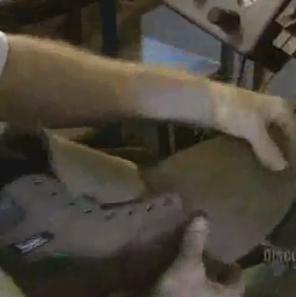In the modern era of manufacturing processes, nothing is more important than safety. Precautions are taken every step of the way, from the delivery and transfer of materials to assembly and shipment. Safety boots are widely commonplace in warehouses and factories – much like other warehouse safety products, these items significantly reduce hazards in and around the workplace.
Most boot production starts with good quality animal hide. A somewhat lengthy tanning processes culminates with layers of hide being vacuumed dry and hung for 1 to 2 days.
The hide is then stretched out in order to eliminate creases. A form cutting mechanism is used, along with a press, to cut the exact amount needed for each boot. Interior lining pieces of the boot are also cut in a similar fashion. Multiple pieces of the hide are then brought and sewn together with a very powerful, human-aided sewing machine. This is also the stage where any extra material is removed from the boot.
After the exterior of the boot is assembled, a foot mount is attached to a form that is inserted into the hide material, giving it the common foot shape. Tempered steel, the most necessary safety feature. is placed on the toe of the boot by hand.
As the form is no longer needed, it is removed at the stage when the sole is installed. Excess residue from vulcanization (the process used to bind the rubber sole to the hide material) is also trimmed off. The insole and laces are finally added, and the safety boot is ready for packaging and distribution.
Be sure to stop by again soon for more news and analysis on warehouse safety and production!

